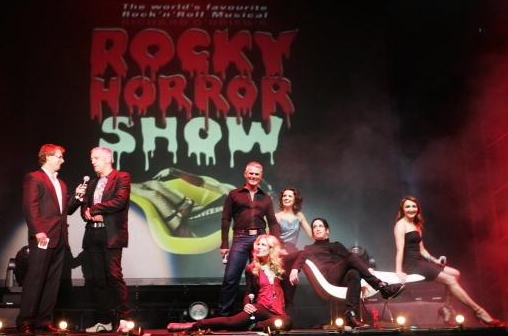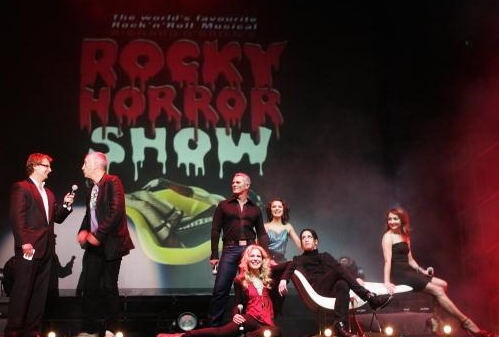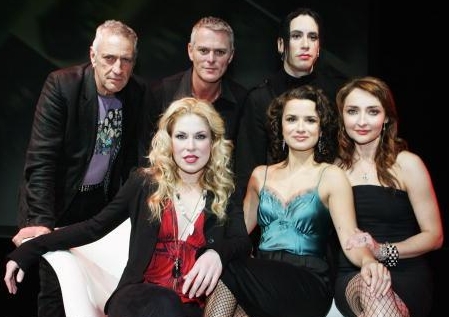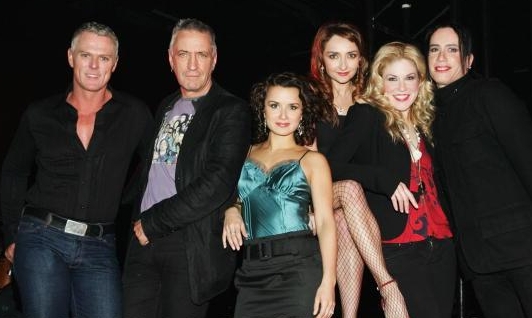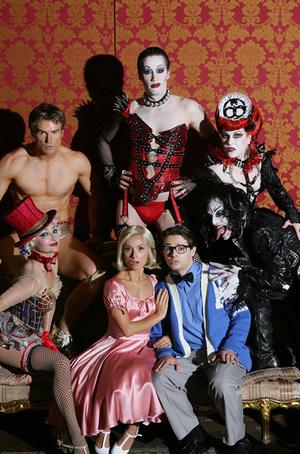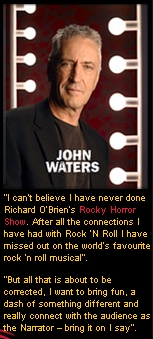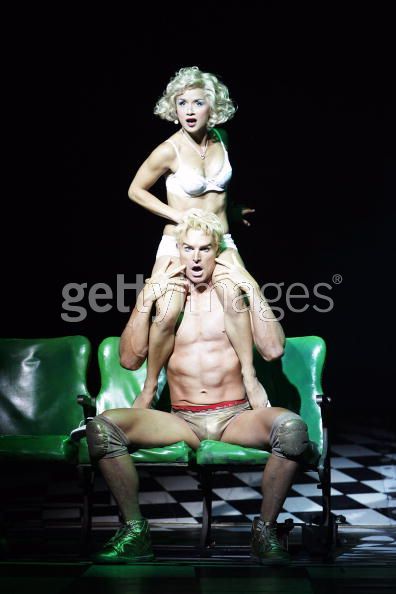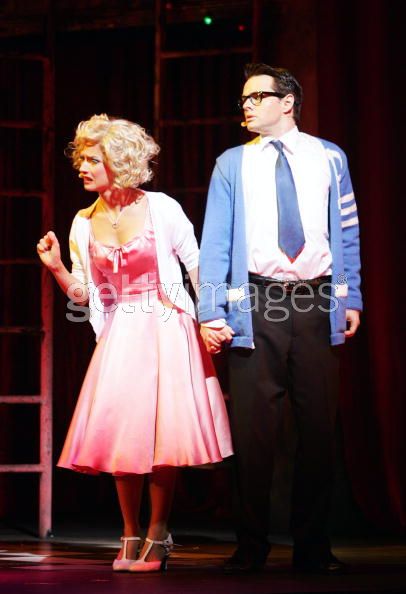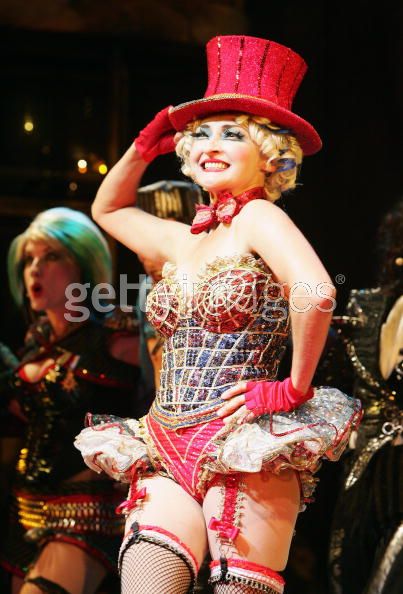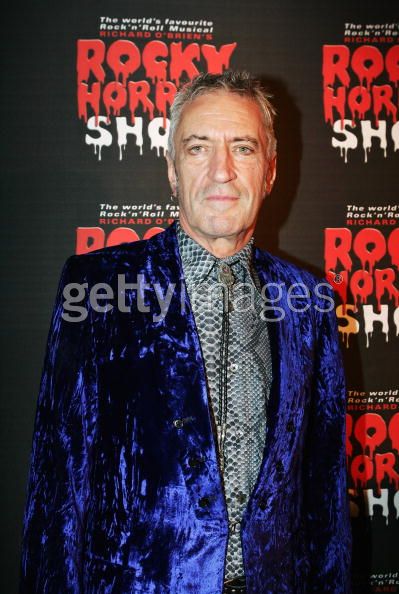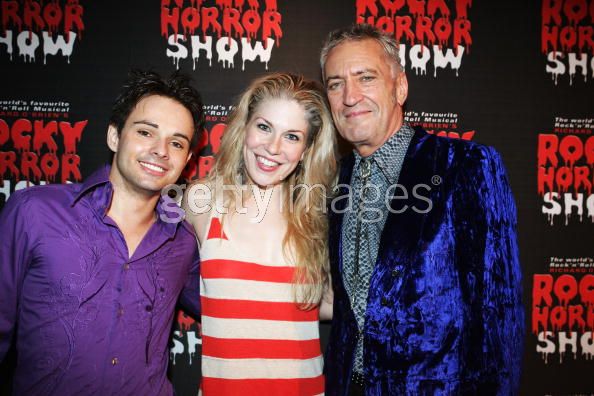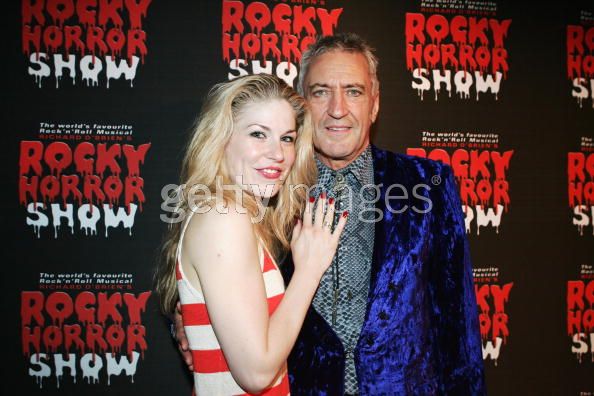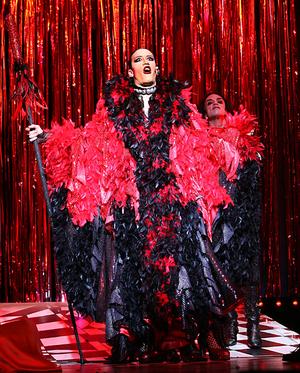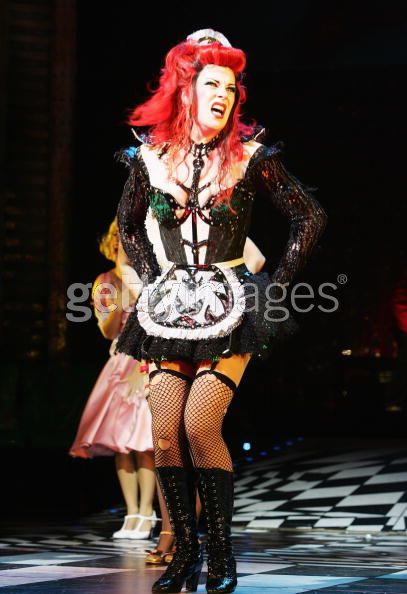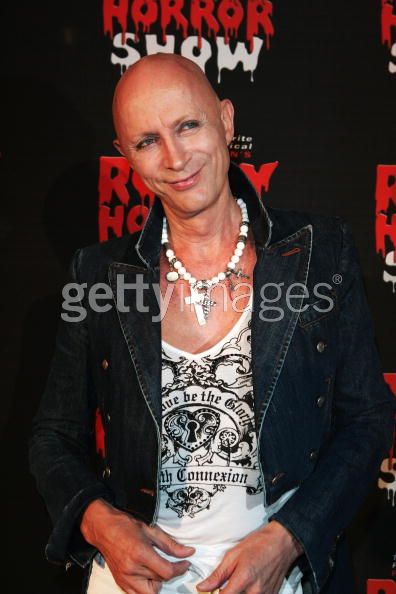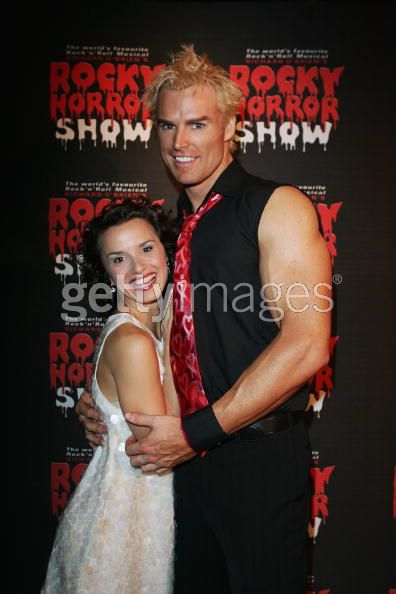And yet the folks in her Glebe laneway remained as silent as the sphinx. But the minute they found out I was directing Rocky Horror, people were coming up to me saying, 'Wow! I hear you're doing Rocky Horror!' " Edwards says.
Thirty-five years and umpteen incarnations after its opening in the 63-seat Theatre Upstairs at London's Royal Court, The Rocky Horror Show is again pulling on the suspenders, with Edwards at the helm. But updating this iconic piece of rock'n'roll theatre, once so deliciously transgressive, has provided challenges aplenty for cast and director.
Written by Richard O'Brien and first directed by Australian Jim Sharman, the musical tells the story of Brad and Janet, a buttoned-up, all-American couple who, when their car breaks down in the dead of night, seek help at a nearby castle. Greeted at the door by a hunchback butler, Riff Raff (played in the new production by Paul Capsis), the couple are soon mixing it with a leather-clad procession of vamps and tramps, lorded over by a transsexual alien called Frank-N-Furter (iOTA) and his libidinous assistants, Columbia and Magenta. What follows is a tale of sexual awakening accompanied by a soundtrack - songs such as Science Fiction and Time Warp - that, like the play and its subsequent movie version, fast achieved cult status.
"At the time it was considered saucy to have a transvestite," says Nell Campbell, who played Columbia in the original 1973 production and in the 1975 feature film. "Today that's a jaded idea. But what completely lives on is the music: there's not a dud tune in the show, which is why it'll survive, like all the great musicals - My Fair Lady, South Pacific, the Rodgers and Hammerstein stuff."
For Edwards, though, a pair of suspenders and some catchy tunes do not a good musical make - certainly not in 2008 and certainly not for Star Casino's revamped Star Theatre, where the show will premiere this month.
"The original show came out of the punk era and that whole counter-culture informed it all," Edwards says. "We're still going to have that eccentricity and cheekiness, but to speak to an audience today you have to bring out other layers of meaning."
Beyond the acres of fishnet lies "an archetypal fairy story", she says, "one that plays into the stream of our subconscious and speaks to deeper levels in us.
Brad and Janet are Adam and Eve figures who meet the serpent, Frank-N-Furter, who introduces them to pleasures of the flesh. They are changed irreparably and, as the narrator says, are 'left crawling across the planet's face, lost in time and space and meaning'."
Progenitor for such musicals as Little Shop Of Horrors and Hedwig And The Angry Inch, Rocky Horror is certainly due for a makeover. "I've always been fascinated with breathing new life into pieces," Edwards says. "So I was the perfect girl for the job."
But such reinvention is not without risk. In 2003 the The New York Times criticised her production of Richard III, at the Shakespeare Theatre in Washington, in which Edwards turned Shakespeare's courtiers into laptop-wielding reporters.
"Gale certainly has a particular process," says Tamsin Carroll, who plays Magenta. "She's not content to do any old revival and neither are we. She's really gone back to the text, and what she's found is a very biblical story. It's about a loss of innocence, which is something we can all relate to. Who hasn't at some stage been on a journey of sexual awakening, where you have to deal with temptation and questions of morality?"
At 28, Carroll is the very embodiment of Edwards's generational dilemma.
"I never saw Rocky Horror at the theatre," Carroll says. "I saw the film, I think, once or twice, but it never meant much to me. I didn't grow up with it and wasn't particularly interested in it. If anything, Grease was more of an influence."
But, according to Carroll, O'Brien's script is richer than most people realise. "The first thing Gale did was get us all together in the rehearsal room and for three days we just read it through and discussed it, scene by scene. We left with a really good idea of who we're playing and their back story."
Carroll and the cast then gorged on B-grade horror and science-fiction flicks - Barbarella, The Forbidden Planet, The Day Of The Triffids, films that informed the play's kitschy, camped-up aesthetic. The original set, put together for $600 by Australian Brian Thomson, was intended to look like a cheap cinema.
"Or at least a theatre that was in the process of being converted into a cinema, which was happening to theatres all over London at that time," Nell Campbell says.
"It was an extremely original idea, to have a set that [involved] a screen and have the performance in front of the screen. It worked, too, because Richard [O'Brien] wrote it as a send-up of all those cheap horror films."
The current production also taps into that. "The old Hammer House Of Horror feel is central to the show," set designer Dale Ferguson says. "You know, unlocking the dark cinema of someone's youth.
The only difference is that our set won't have quite the same comic-strippy type feel. It'll be more realistic, as if it's real cinema that's just decayed and in a state of disrepair."
Ferguson, whose previous projects include Eugene Onegin for Opera Australia and The History Boys for the Melbourne Theatre Company, had only $200,000 to play with, "which is extremely small in musical terms. It means that you just have to be really resourceful and rely to a certain degree on found objects. Brad and Janet's car, for instance, was pieced together with the grille and headlights from an old Holden EK."
All up, Ferguson spent two weeks finding abandoned props for the interior of Frank-N-Furter's mansion: carved polystyrene lions, Japanese lanterns, old traffic lights and, best of all, a one-metre-high vacuum-formed Egyptian mummy's head.
"That was the fun part," he says. Putting it all together in the new Star Theatre, a comparatively low-roofed venue originally designed for cabaret, proved somewhat trickier.
"We are the first show in there after it's been converted from a showroom with tables and seats," he says. "So we've inherited elements that have been, ah, challenging. The stage is lower, for a start, so we needed to raise it to make sure that an audience in tiered seating can see the performers' feet, which is important when you have lyrics like, 'It's just a jump to the left.' "
The sight lines are also unusually wide, with seating that curves around the stage. "We had to carefully consider how deep the set was going to be, to make sure that everyone in the audience could see major entrances, like Frank-N-Furter's."
Set modifications aside, Ferguson remains confident of the show's relevance. "The only comedy is in truth," he says. "And there's plenty of truth in Rocky Horror. The songs are fun but this show still has things to tell us."


